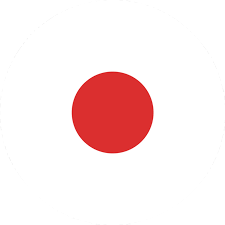Table of Contents
In the digital transformation of dental clinics, a prevalent challenge is the inefficiency of multi-device collaboration. Functions such as intraoral scanning, facial scanning, and jaw motion tracking often rely on different independent devices, resulting in fragmented data and cumbersome integration, increasing diagnosis and treatment time.
How to solve it? SHINING 3D DENTAL has introduced the e-Motion Workstation, designed to optimize diagnostic precision and clinic efficiency through integrated design. How does this all-in-one digital dental solution work? What can it bring to clinics? So without further ado, keep reading.

What is e-Motion Workstation?
The e-Motion Workstation is the world’s first all-in-one digital dental solution introduced by SHINING 3D DENTAL, combining intraoral scanning, facial scanning, and mandibular movement tracking functions.
You can see it as a highly integrated “dental cart.” It replaces the workflow of multiple standalone devices with a single system, seamlessly integrating all oral data into powerful software. Then, a dynamic virtual patient model can be created to enhance the efficiency and predictability of complex cases, especially in edentulous implants and occlusal rehabilitation.
How Does this All-in-One Digital Dental Solution Work?
The workflow of SHINING 3D’s e-Motion Workstation primarily involves four steps: data acquisition, diagnosis and analysis, Exocad design, and restoration fabrication.
1. Data Acquisition
This is the foundation of all work. This SHINING cart uses multiple digital dentistry equipment to obtain detailed data of the patient’s oral cavity.
· Intraoral Data
Intraoral scanners quickly and accurately obtain digital impressions of the patient’s oral cavity. Products that can be fitted with the e-Motion cart include Aoralscan Elite Wireless, Aoralscan Elite, Aoralscan 3 Wireless, and Aoralscan 3. The latter two are standard intraoral scanners, while the first two are SHINING 3D’s innovative IPG (intraoral photogrammetry) intraoral scanners.
The IPG dental scanner employs a multi-angle photogrammetry principle to rapidly calculate the spatial relationships among teeth, gums, and implants during the scanning process. Thus, even when dealing with complex full-arch cases (such as All-on-X implants), it can maintain high precision.

· Facial Data
Facial scanner MetiSmile-MR helps capture detailed facial data for higher-level aesthetic planning. It takes only 10 seconds to photograph the patient from multiple angles while constructing 3D facial data, offering advantages such as high-fidelity facial textures and high precision.

· Jaw Movement Tracking Data
Utilize the non-contact jaw motion capture function of MetiSmile-MR, which can be completed quickly in approximately 5 minutes. Jaw tracking methods include direct tooth markers and bite fork attachment, accurately capturing the patient’s full range of mandibular movements during opening, closing, protrusion, left and right excursions, chewing patterns, or Posselt’s envelope.
· CBCT Data
Finally, CBCT is used to obtain internal bone tissue information that cannot be acquired through intraoral scanning, such as the density and morphology of the alveolar bone, the position of tooth roots, and the state of the mandibular canal, facilitating subsequent implant planning.

2. Diagnosis & Analysis
Next, the e-Motion Workstation software aligns all data in one coordinate system and creates a virtual patient model. The data within models will be accurately matched. For example, facial data is aligned with intraoral data to ensure facial harmony and aesthetics when planning implant or orthodontic treatments.
Based on the virtual patient model, doctors can conduct comprehensive diagnosis and analyses, including tooth arrangement, occlusion, and neurovascular positioning, to develop precise and personalized treatment plans.
3. Exocad Design
Exocad is an advanced CAD design software platform for dental applications. Based on the virtual patient model and diagnostic results, dentists directly design dental restorations in the Exocad software, such as temporary dentures and removable dentures. Thanks to the precise dynamic jaw motion data, the designed restorations ensure a perfect passive fit.
During the design process, the final outcome of the restoration can also be simulated through the software. Patients can immediately see the expected results, enhancing their confidence in the treatment.
4. Restorations Fabrication
Finally, all digital models are ready, and the usual next step is to send the data files to the dental lab for the restoration fabrication. However, if the SHINING 3D cart is directly integrated with dental 3D printers, such as SHINING 3D’s AccuFab-F1, it enables the immediate chairside production of temporary restorations.
The printer uses photosensitive resin material, employing a layer-by-layer curing process to quickly and accurately transform the digital model into a physical restoration. In implant cases, this avoids patients having to remain edentulous for extended periods, thereby enhancing patient satisfaction and the clinic’s reputation.
Your Clinic Needs an All-in-One Digital Dental Solution
What can intraoral scanner cart solutions like the e-Motion Workstation bring to your dental clinics? The leap in efficiency and precision for orthodontic treatments, implants, and restorations is where this IOS cart’s true value lies.
1. Orthodontic Treatment
This dental cart collects the patient’s intraoral data, facial images, and mandibular movement trajectories to generate a virtual patient. Orthodontists can simulate tooth movements on this model and analyze the impact of each movement on occlusion and smile curves.
This data can be directly used to guide the design of clear aligners or fixed appliances, ensuring that the results are not only about teeth alignment but also the coordination of function and aesthetics.
2. Dental Implant
Dental implant surgery, especially in All-on-X cases, often faces challenges with passive fit. However, this IPG dental scanner cart breaks through traditional limitations in accuracy and efficiency:
- · The IPG dental scanner ensures scanning accuracy of up to 5μm. Combined with precise facial and jaw motion tracking, as well as CBCT data, it plans the optimal implant position, angle, and depth.
- · All scanned data can be quickly acquired and analyzed. Integrated with chairside 3D printing, it enables the immediate fabrication of restorations, significantly alleviating the time pressure associated with immediate loading.
3. Restoration
This SHINING 3D Elite cart also simplifies and enhances aesthetic dental restoration solutions. For example, the fully digital workflow streamlines the restoration process from crowns and bridges to dentures. Using Exocad software, the restorations can be designed efficiently and aesthetically.
For anterior aesthetic restorations, dentists can refer to the scanned facial model to help patients design a digital smile curve, ensuring that the restoration results are natural.
Wrapping-Up
The e-Motion Workstation goes far beyond merely installing all devices on the same dental equipment scanner cart; it also involves the integration of data and software. Whether aiming to improve complex dental restoration solutions or to enhance the efficiency and quality of daily treatments, investing in all-in-one dental innovations is key to improving the future competitiveness of your clinic.
Contact SHINING 3D DENTAL now for precise, efficient, and predictable digital diagnostics and treatment.
 ENG
ENG








